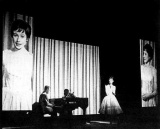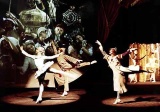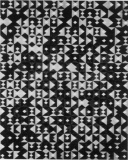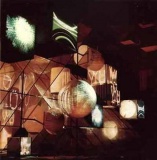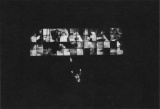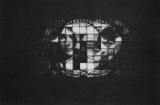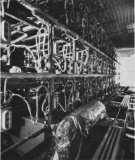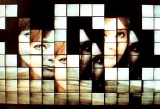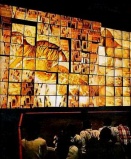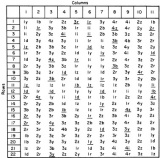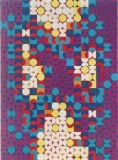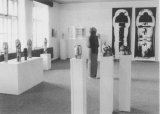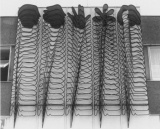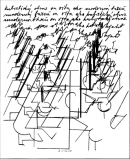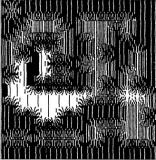Arts and engineering groups and collectives in CEE
Groups and collectives
- Exat 51 group, Zagreb, 1950-56, architects and painters; and New Tendencies, Zagreb, 1961-73
- Dvizheniye group, Moscow, 1962/64-1976
- ARGO group, Russia, early 1970s
- Kinema Ikon Arad 1970-2005
- Open Form in Poland
- Theremin Center Moscow *1992
more
- Czechoslovakia
- Zdeněk Sýkora with Jaroslav Blažek, Prague, since 1966, first computer generated line paintings in 1972
- Jozef Jankovič with Imrich Bertók, Bratislava, since 1966/1973, lithographies and serigraphies based on computer-generated drawings
- Jaroslav Frič with Josef Svoboda (Polyvision, 1967); Jaroslav Frič with Radúz Činčera (Kinoautomat, 1968)
- composer and theorist Alois Piňos with graphic artist Dalibor Chatrný, created four audiovisual compositions in 1969-71: Statická kompozice (for electronic music and slides, 1969), Mříže (for piano and film, 1969), Geneze (for chamber ensemble and film, 1970), Adoration (composition utilizing pendent plastic objects made to ring in different ways, 1970).
- Milan Grygar with musical theorist Vladimír Lébl, exhibition for the festival of experimental music in Smolenice, 1970
- Petr Kotík with Jan Kučera, at Buffalo University, 1971-1983
- Juraj Bartusz with Vladimír Haltenberger, Bratislava, since 1973, manufactured sculptures based on computer-generated curves
- Daniel Fischer with computer engineers Pavol Fischer and Igor Klačanský, Bratislava, since 1975, computer morphing line drawings
- Milan Guštar has been providing technical support for the works by David Černý, Silver, Federico Díaz, Miloš Vojtěchovský, Michael Bielický and others since 1987.
- Transmusic comp. group, 1989-1996.
- Silver, *1994, Petr Svárovský, Milan Guštar and Pavel Rejholec.
- Croatia
- Free experiments with mixed media were part and parcel of the poetry of the so-called Group of Six Artists who mixed media such as photography, film, and photocopy in the form of visual art, art books and (street) performance. Active in Croatia.
- Vladimir Petek set up in 1971 the FAVIT art association (film-audiovisual research - television) and created a series of multimedia works with a number of collaborators, mostly multivision (multi-channel video, film and slide projections), and realized ten computer movies with Tomislav Mikulic in 1976.
- In the late 1980s in Croatia, the Nova Evropa (NEP, founded by Dejan Krsic) group, Studio imitacija zivota (SIZ; Darko Fritz and Zeljko Serdarevic), Grainer and Kropilak and the Katedrala project displayed artistic activity carried out under a collective authorship (in the Katedrala project a computer programmer has been included as a full-fledged author). The above-mentioned used the media as their basic material (reproductive, electronic, digital and mass media) and inaugurated sampling/cut-up/quotation/recycling as an expression without specific stylistic characteristics, i.e. the rejection of the idea about the original. The medium of photocopy in the pre-Photoshop aesthetics of the 1980s (in the wake of experiences of copy art of the 1970s) was the prime graphic tool. In the case of SIZ and NEP more indicative were their media projects than the produced objects. NEP inaugurated a new understanding of equaling politics and art, not just by ³borrowing² from political rhetoric but also by using it on an equal footing, in the spirit of post-modernist theories. In 1988, SIZ thrice opened an exhibition (of graphics) using three manners of opening: live broadcast over the radio, by a spoken word of an art historian, and by textual print-outs of interviews. In 1990, SIZ stopped working after having completed a three-year production and distribution (corporative) plan. The Katedrala project (Bakal, Fritz, Juzbasic, Marusic, Premec; 1988) took place on the anniversary of death of Andy Warhol and called for a transformation of image to sound of a Mussorgsky composition and the sound into a space performance of Kandinsky. It was a space generated by a computer using joint sound, light, and video elements set in motion through the movement of the audience and the signals of an EEC connected to the performer, Joska Lesaj, the opera signer.
- Slovenia
- avant-garde group OHO in Ljubljana, 1960s and early 1970s. used drawings, photographs, film, video, music, texts, also the way of dressing, living and behaviour.
- Poland
- late 1980s in Poland: Yach-Film group: Yach Paszkiewicz, Dorota Podlaska, Bombela Kuich, Andrzej Kuich, Andrzej Wasik. Worked on the border of film and video. Paszkiewicz was shooting on Super 8 film and transferring onto magnetic tape. In his case relationship between video and music was evident. His later career as a musical videoclip maker seems to be a consequence of the previously made artistic decisions.
- Hungary
- Balázs Béla Studio in Budapest, *1961
- Budapest New Music Studio, founded in 1970 by László Vidovszky, Zoltán Jeney, László Sáry, Péter Eötvös, and Albert Simon. Active throughout 1970s and 80s.
- more
Works
Josef Svoboda, Laterna magika, 1958
Josef Svoboda, Laterna magika, 1958
Josef Svoboda, Laterna magika, 1958
Josef Svoboda, Jaroslav Frič, Polyvision, 1967. © Josef Svoboda, Jaroslav Frič
Josef Svoboda, Diapolyecran at the Czech Pavilion at Expo 67. Each square is a self-contained automatic slide-projector unit. Through careful programming the images appear either isolated or unified.
Josef Svoboda. A fractured image on the Diapolyecran. The image can move as in film (through the extremely rapid changing of slides) or appear static in any kind of mosaic formation.
Josef Svoboda. The slide-projector equipment bank of the Diapolyecran. Each of 112 projectors was mounted on its own carriage which could take position in one of three places. The slide image and movement program was memorized on tape and controlled from a central booth not pictured.
Josef Svoboda, Polyecran, 1967
Josef Svoboda, Polyecran, 1967
Radúz Činčera, Kinoautomat One Man and his Jury, 1967
Radúz Činčera, Kinoautomat, 1967
Radúz Činčera, Kinoautomat, 1967
Jozef Jankovič, exterior design for a general hospital in Bratislava IV, colored aluminium and epoxy, 6 x 6 m, 1981-1982. The artwork was created according to computer drawings using the PDP11 computer and the Calcomp plotter. Each column shows the morphing of an outline of part of the human body into an electrocardiograph signal.
Literature
- Martin Šperka, "The Origins of Computer Graphics in the Czech and Slovak Republics", Leonardo, Vol. 27, No. 1 (1994), pp. 45-50 [1]
- Jarmila Doubravová, "Music and Visual Art: Their Relation as a Topical Problem of the Contemporary Music in Czechoslovakia", International Review of the Aesthetics and Sociology of Music, Vol. 11, No. 2 (Dec., 1980), pp. 219-228 [2]
- Zdeněk Sýkora, Jaroslav Blažek, "Computer-Aided Multi-Element Geometrical Abstract Paintings", Leonardo, Vol. 3, No. 4 (Oct., 1970), pp. 409-413 [3]
- Libor Zajíček, "The History of Electroacoustic Music in the Czech and Slovak Republics", Leonardo Music Journal, Vol. 5, (1995), pp. 39-48 [4]
- http://www.ekac.org/dialogicimag.html
- Jarmila Doubravová, Hudba a výtvarné umění, Prague: Academia, 1982

